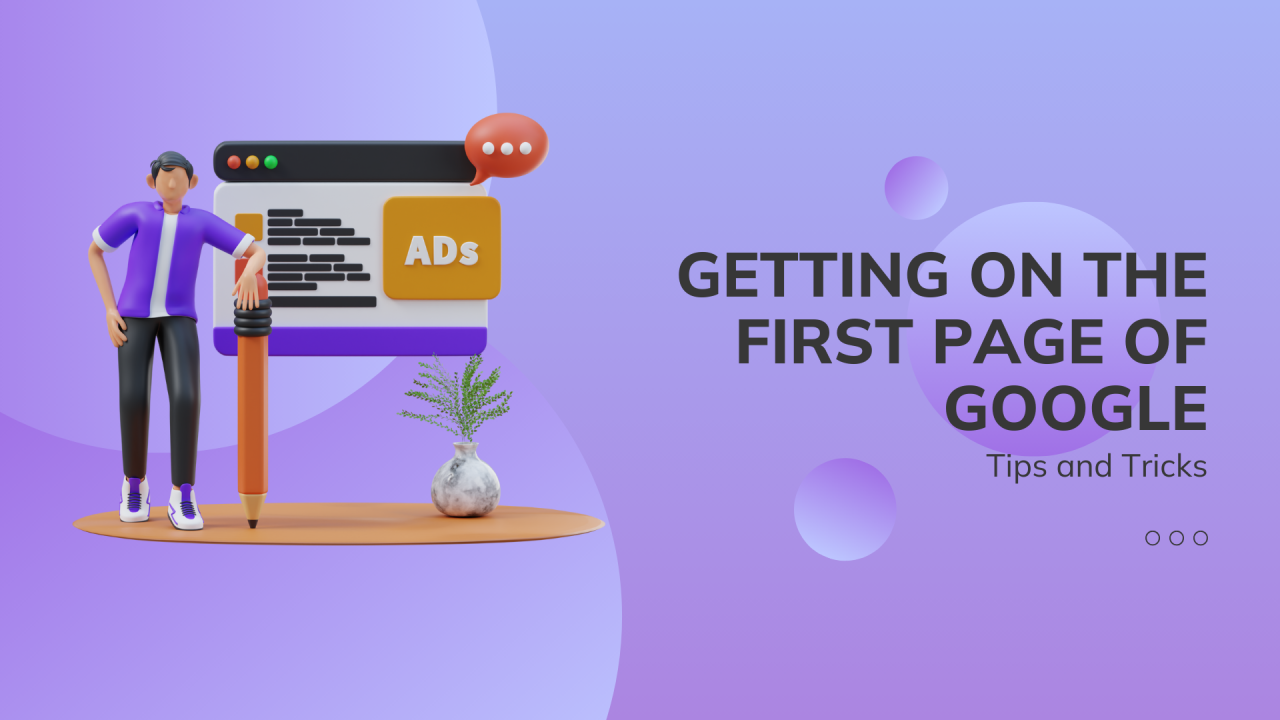Getting on the first page of Google search results can seem like a daunting task, especially with the constant changes in algorithms and fierce competition. However, with the right SEO (Search Engine Optimization) strategies, it’s entirely possible. David Aziz, a digital marketing expert, has shared proven tactics for improving search rankings and staying on the first page. In this guide, we’ll break down these strategies into easy-to-understand steps, helping you achieve the visibility your website deserves.
Why Is It Important to Be on the First Page of Google?
Before diving into the strategies, it’s crucial to understand why being on the first page of Google is essential. Studies show that 75% of users never scroll past the first page of search results. This means if your website isn’t on the first page, it’s likely missing out on a significant amount of traffic. First-page rankings lead to more organic traffic, increased brand visibility, and ultimately, higher conversion rates.
Key SEO Strategies to Rank on the First Page of Google
Here are some key strategies David Aziz recommends to rank your website on the first page:
1. Conduct In-Depth Keyword Research
Keyword research is one of the foundational aspects of SEO. You need to find out what terms or phrases your target audience is using when searching for your product or service. Tools like Google Keyword Planner, SEMrush, and Ahrefs can help you discover high-volume, low-competition keywords.
- Primary Keywords: These are the main keywords related to your business.
- Secondary Keywords: These are variations or related terms that support the main keyword.
- Long-tail Keywords: These are longer, more specific phrases that tend to have lower competition but can drive more targeted traffic.
| Tools for Keyword Research | Features |
|---|---|
| Google Keyword Planner | Free, Accurate Data from Google |
| SEMrush | Comprehensive SEO & Competitor Analysis |
| Ahrefs | Detailed Backlink and Keyword Insights |
| Moz Keyword Explorer | User-Friendly Interface & Keyword Suggestions |
| Ubersuggest | Free Basic Keyword Research |
2. Optimize Your On-Page SEO
On-page SEO involves optimizing the elements on your website. Each page should focus on a specific keyword, and the content needs to be aligned with that keyword. Below are essential on-page SEO factors:
- Title Tags: Include your primary keyword within the title tag. Make sure it’s under 60 characters.
- Meta Descriptions: Provide a concise and compelling description of the page’s content (around 150–160 characters), including the main keyword.
- Headings (H1, H2, H3): Organize your content by using proper heading tags, with the H1 tag containing your main keyword.
- Internal Linking: Link to other relevant pages within your site to help with navigation and SEO.
- Image Optimization: Use descriptive alt text with keywords for images.
- URL Structure: Keep URLs short, readable, and keyword-rich.
3. Create High-Quality, Relevant Content
Content is still king when it comes to SEO. Google’s algorithms favor websites that offer value to users. By providing helpful, informative, and engaging content, you’re more likely to rank higher. Here’s how to create high-quality content:
- Write Long-Form Content: Articles that are 1,500+ words tend to rank better because they offer in-depth information.
- Answer Searcher Intent: Ensure your content solves the user’s query.
- Use LSI Keywords: Latent Semantic Indexing (LSI) keywords are words and phrases that are related to your main keyword, helping Google understand your content’s context better.
4. Improve Website Speed and Mobile Optimization
In today’s fast-paced world, users expect websites to load quickly. A slow site can significantly harm your rankings and user experience. According to David Aziz, improving site speed is critical for SEO.
- Use a CDN (Content Delivery Network): A CDN helps reduce latency by delivering your site’s content from the closest server to the user.
- Compress Images: Large images slow down page speed. Use tools like TinyPNG or ImageOptim to compress images without losing quality.
- Minify CSS, HTML, and JavaScript: Reducing file size of your code can speed up load times.
In addition to speed, mobile optimization is vital. With Google’s mobile-first indexing, your site needs to be responsive and offer an excellent experience on all devices.
| Factors Affecting Page Speed | Tools to Analyze & Improve Speed |
|---|---|
| Large Images | TinyPNG, ImageOptim |
| Unoptimized Code | Google PageSpeed Insights, GTMetrix |
| Server Issues | Pingdom, WebPageTest |
| Lack of CDN | Cloudflare, KeyCDN |
5. Build High-Quality Backlinks
Backlinks (links from other websites to yours) are one of the top ranking factors in Google’s algorithm. The more authoritative websites linking to your content, the better your site will rank. David Aziz emphasizes the importance of natural, high-quality backlinks.
Here are a few ways to earn backlinks:
- Guest Posting: Write articles for other reputable blogs in your niche.
- Create Shareable Content: Infographics, guides, and lists are more likely to be shared and linked to.
- Reach Out for Link Building: Contact webmasters in your industry to inform them of your valuable content.
- Fix Broken Links: Find broken links on other websites and suggest replacing them with your content.
| Backlink Strategy | Description |
|---|---|
| Guest Posting | Writing articles on other sites to earn a link back |
| Skyscraper Technique | Improve existing content and ask for links |
| Broken Link Building | Replacing broken links on external sites with your content |
| Influencer Outreach | Asking influencers in your niche to link to your site |
| Content Partnerships | Collaborating with others to create mutually beneficial content |
6. Use Structured Data and Schema Markup
Structured data, also known as schema markup, helps search engines better understand your content. By adding structured data to your site, you increase the chances of appearing in rich snippets, which can enhance your visibility in search results. Rich snippets include star ratings, reviews, product details, and more, making your site more attractive to users.
There are several types of schema you can add to your website:
- Article Schema: For blog posts and news articles.
- Product Schema: For e-commerce stores showcasing products.
- Local Business Schema: For businesses with physical locations.
- FAQ Schema: For answering frequently asked questions on your page.
7. Focus on User Experience (UX)
Google takes into account how users interact with your site. If your site is difficult to navigate, slow to load, or cluttered, users are more likely to leave, signaling to Google that your site isn’t providing a good experience.
Here’s how to improve UX:
- Simplify Navigation: Make it easy for users to find what they’re looking for.
- Enhance Readability: Use bullet points, headings, and short paragraphs.
- Improve Accessibility: Ensure your site is accessible to users with disabilities.
- Encourage User Interaction: Include interactive elements like buttons, quizzes, and comments.
Detailed Table: SEO Techniques, Features, and Benefits
| SEO Technique | Key Features | Benefits |
|---|---|---|
| Keyword Research | Use of primary, secondary, and long-tail keywords | Targets user search intent and increases relevance |
| On-Page SEO | Optimizing titles, headings, URLs, images | Improves website ranking and user experience |
| High-Quality Content Creation | Long-form, engaging content | Increases dwell time, shares, and backlinks |
| Mobile Optimization | Responsive design, fast loading | Boosts mobile rankings and provides a better user experience |
| Backlink Building | Guest posting, skyscraper technique, broken links | Improves domain authority and trust with search engines |
| Structured Data & Schema Markup | FAQ schema, product schema, article schema | Enhances rich snippets and improves CTR in search results |
| User Experience (UX) Optimization | Easy navigation, readability, accessibility | Reduces bounce rates and improves user engagement |
Conclusion
Getting on the first page of Google may seem challenging, but with the right strategies, it’s achievable. By conducting in-depth keyword research, optimizing on-page SEO, building quality backlinks, and improving your site’s speed and user experience, you can rise to the top of search results. David Aziz’s approach focuses on providing value to users and following best practices in SEO, which is a winning combination for long-term success.
By following these easy-to-understand steps, you’ll be well on your way to achieving higher search rankings and driving more traffic to your website. Remember, SEO is an ongoing process, so it’s essential to keep up with the latest trends and updates to maintain your position on the first page of Google.








